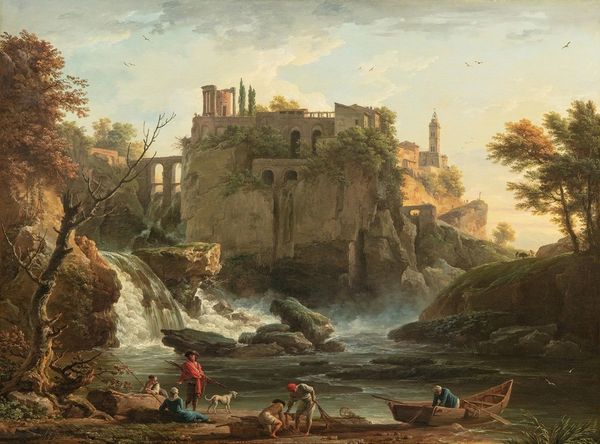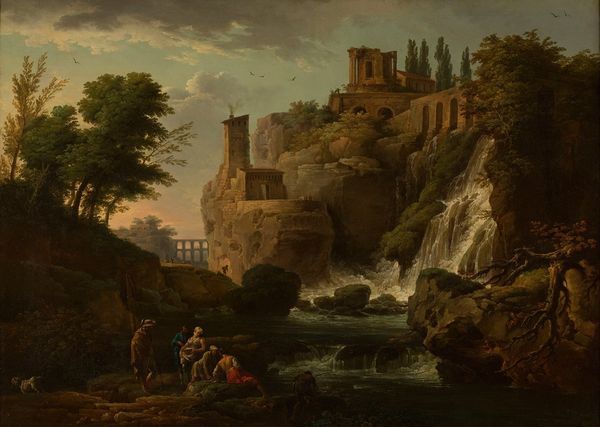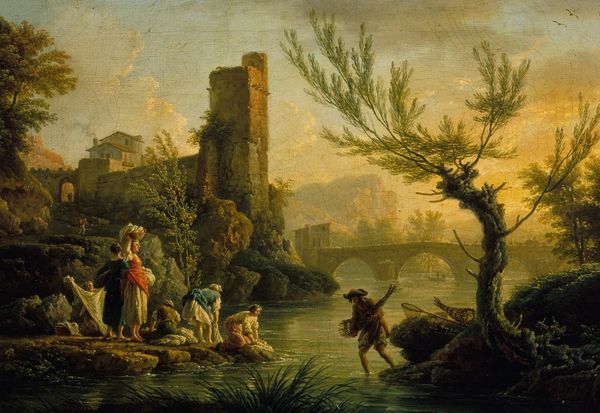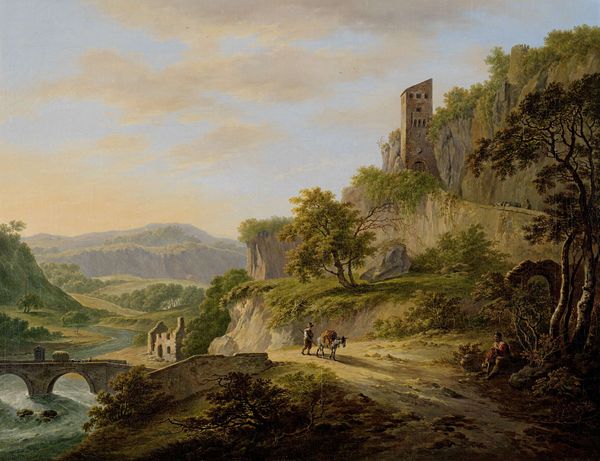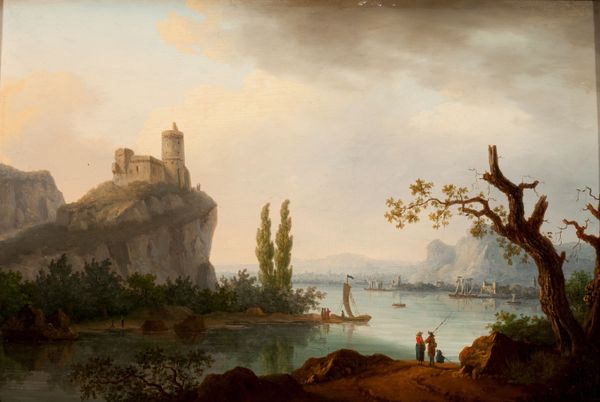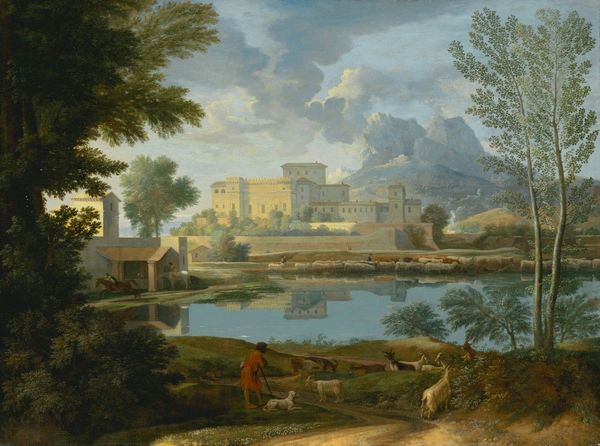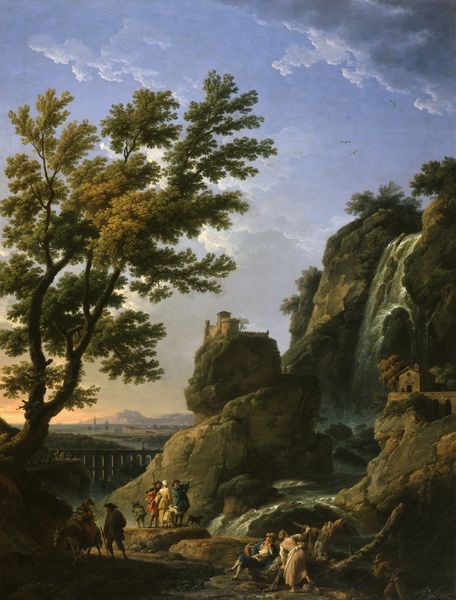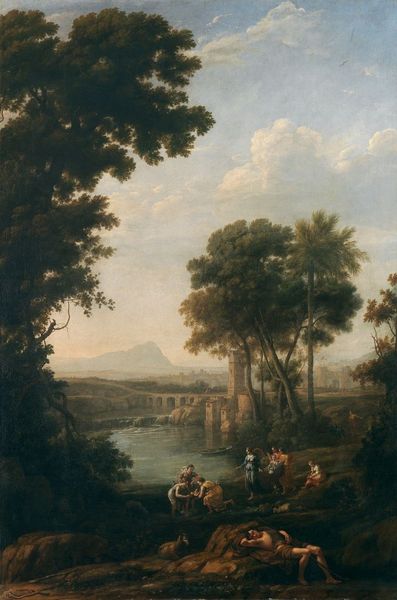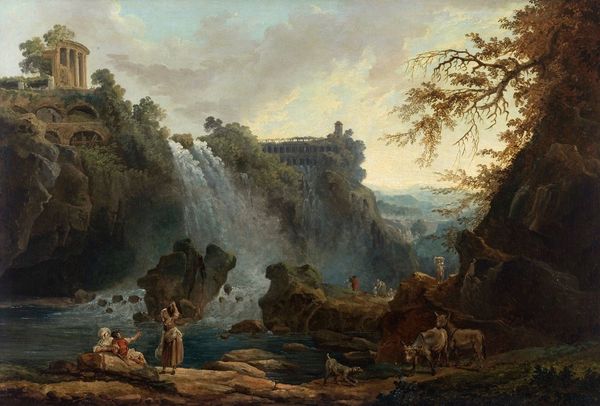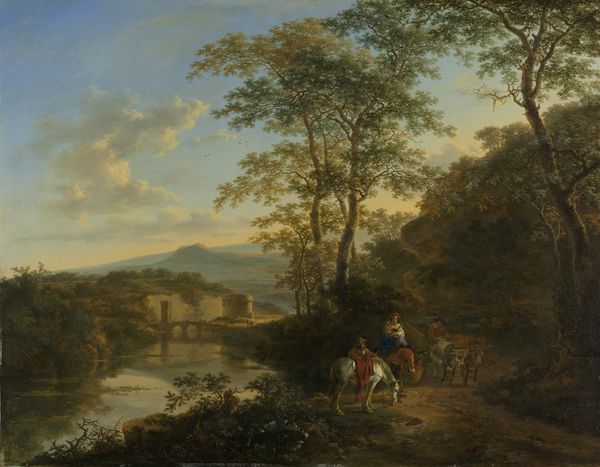
painting, oil-paint
#
baroque
#
painting
#
oil-paint
#
landscape
#
oil painting
#
romanticism
#
nude
Copyright: Public Domain: Artvee
Claude-Joseph Vernet completed this “Summer Evening, Landscape in Italy” using oil paints and canvas, during a time when such materials were increasingly commodified. Think about how the pigments were sourced; they were often derived from minerals, plants, or even insects, ground into powders, and mixed with oil. Canvas was woven from flax, a crop cultivated and processed by agricultural laborers. The brushes were likely made with animal hair, meticulously arranged and bound. The finished painting displays the mastery of Vernet, his skills honed through years of training and practice. But consider the broader context: the economic systems that supported the production and distribution of these materials, and the labor involved at every stage. In looking at a painting like this, it is easy to think of Vernet's talent, but we must also reflect on the unseen contributions of countless individuals whose work made his vision possible. The next time you stand before an oil painting, remember that you are seeing not just a representation, but also the material trace of an entire economy.
Comments
No comments
Be the first to comment and join the conversation on the ultimate creative platform.
